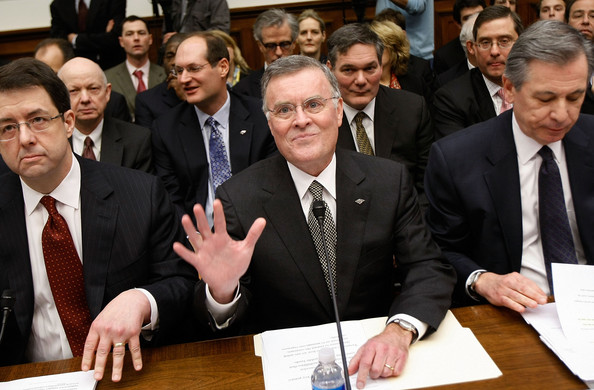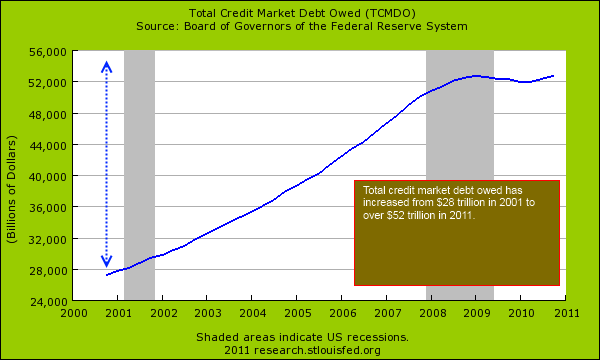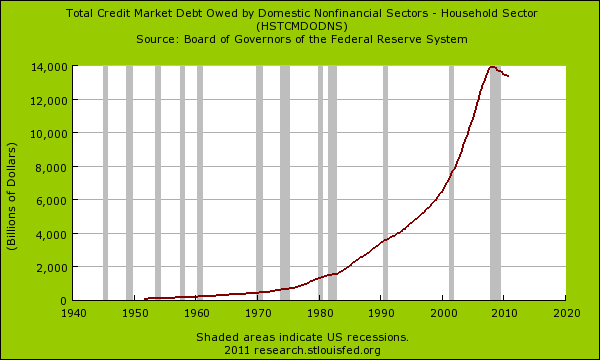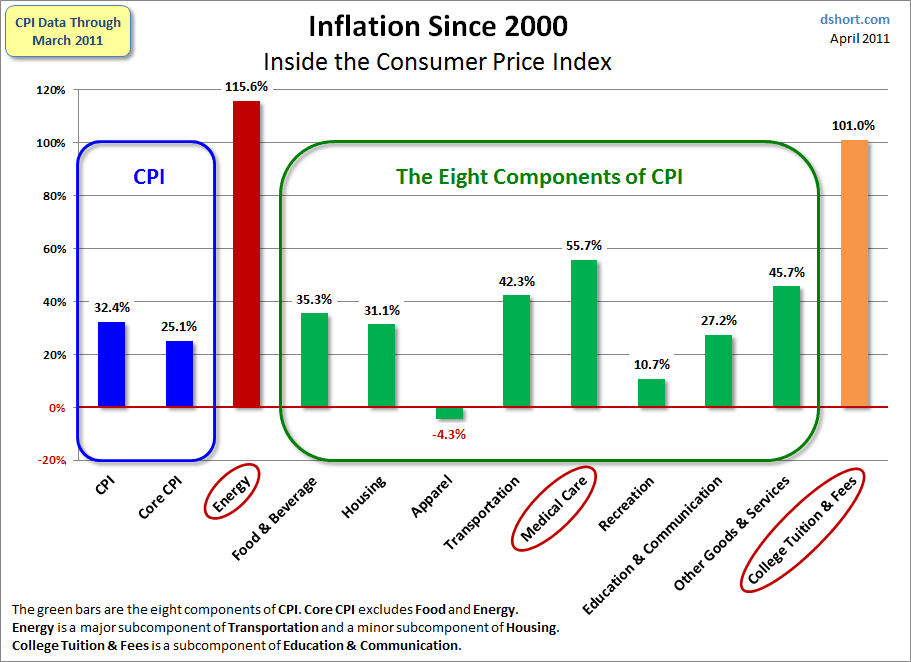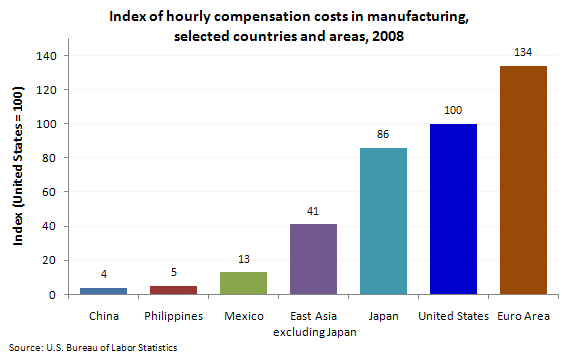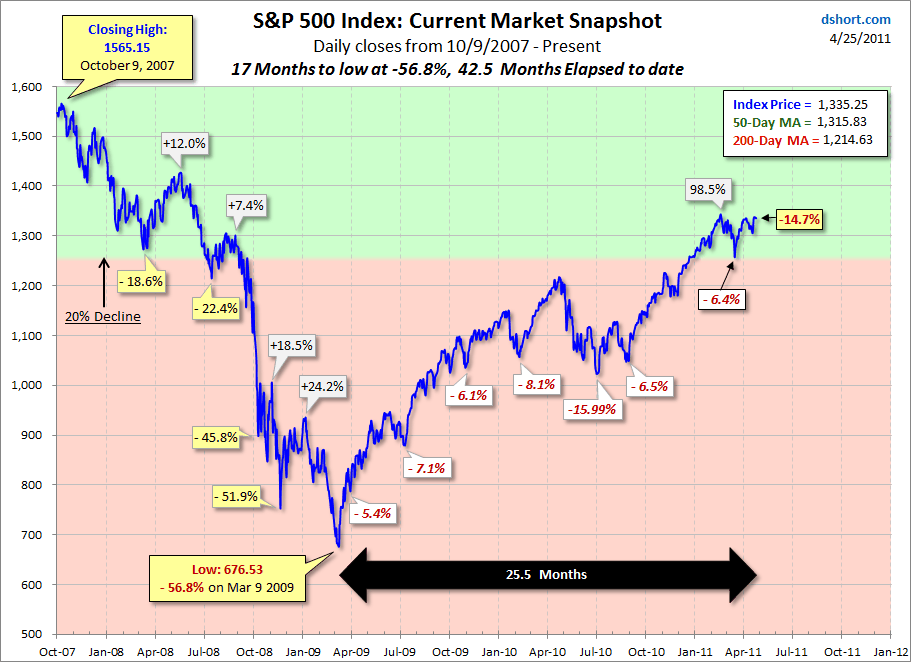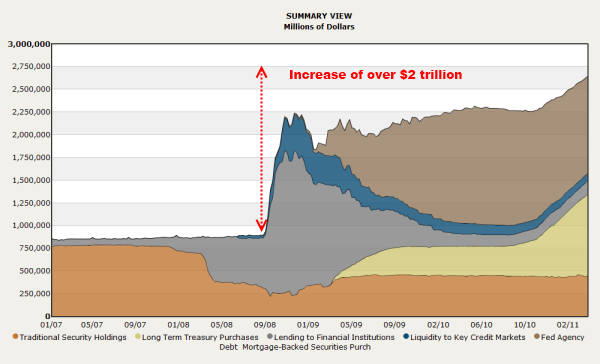It was only a matter of time. Now the talk of silver price conspiracies has shifted from long buyers to those on the other side of the fence. On April 21st, the historically anti-precious metals editorial staff of the London Financial Times ran an article titled "Silver Surge Prompts Conspiracy Theorists". Meanwhile, order was reestablished among the short side conspirators once the COMEX trading floor opened on Monday morning.
After silver prices had temporarily risen to over $49 per ounce during Asian trading, they were beaten down again to about $47 in a flood of newly opened short positions. From this return to discipline within the bullion bank ranks, we can assume that the Federal Reserve probably will temporarily halt QE-2 at the end of June or before.
At the close of business on Tuesday, April 26, 2011, the COMEX performance bond committee will, yet again, significantly raise silver margin requirements. We believe that this is an attempt to suppress prices and delay the inevitable reckoning. With the end of QE-2, short-sellers hope the exponential rise in the price of silver will also end. But, in our view, artificial price attacks in the futures markets are unlikely to help short sellers in the long run. The nexus of price appreciation is NOT at COMEX, but in the physical market. Physical silver buyers pay cash, and it doesn't matter to them how high or low COMEX committees set performance bonds.
If the performance bond committee is successful, they will manage to reduce the so-called "spot" price. In practical terms, however, the only thing they will have accomplished is to cause a few speculators to lose money while helping well-financed market vigilantes to buy more bars of physical silver for the same money. The bankers will then need to deliver even more physical silver than they would if the committee had done nothing. These futile attempts to fight back illustrate that a market manipulation cannot be effective in a market that is well aware of it.
The massive losses that short sellers have been taken has naturally led to some new urban myths. Some now claim that "evil" long side billionaires are out to "ruin" the market. Yet, even the Financial Times article points out the ridiculously paranoid nature of this theory. The author notes that silver prices were rising even as speculative positions at COMEX were reduced by 8.4%. This illustrates that the COMEX is now just a sideshow. A lot of people are simply buying physical silver.
The silver buyers do include some billionaires, undoubtedly, but most of them are simply folks who watched Jeffrey Christian's testimony at the well publicized CFTC position limits hearing back on March 25, 2010, and came away with the distinct impression that a small group of London banks have been creating alchemic silver. The banks were ostensibly "selling" and then "storing" so-called "unallocated silver bars" for silver investors. In reality, they seem to have been maintaining a fractional banking system in which only one physical ounce is really purchased for every 100 ounces they supposedly sell.
Let's go over that again...because once you understand the particulars, the reaction of the price of silver becomes perfectly understandable. 1) Bank sells silver, a very precious item, for big money; 2) Bank doesn't buy the silver it sells, or, if it does buy it, leases out or sells 99 ounces for every 1 ounce in the vault; 3) Bank gets paid "storage fees" from all its customers, even though their silver is not in the vault; 4) Bank profits are equal to 99 times what it sells initially, and then, the value of the stream of storage fees after that. Nice work if you can get it.
But, then there's the downside. 1) The market might discover your scam and you'll need to deal with investigations; 2) Leverage so high that, if discovered, it is a recipe for disaster; 3) Courts may deem the arrangement a fraud, in spite of disclaimers that say otherwise, and whereby customers waive liability for fraud; 4) the market will inevitably punish you severely with heavy losses after discovery of the scam. For more information on "unallocated storage" in London, see our previous article.
Had the worldwide silver scam remained a secret, suppression of precious metals prices might have gone on forever. But the genie is now out of the bottle and mortal men, not even those who run casino-banks, cannot hope to put him back in. Once it became clear that the bullion banks were leveraged 100 to 1 in a silver based fractional banking scheme, it was only a matter of time before the market clobbered them. That is what is happening.
People have only begun to scratch the surface of the precious metals markets, and few fully understand how undervalued all of them are. Silver has always been worth far more than it had been selling for in the last 30 years. People are starting to see not only this, but also how that corrupt pricing situation came to pass. The whole world now understands that the silver trade has been carried out in a deceitful manner for many years. So, naturally, many people are starting to buy physical silver again, just as they did for 10,000 years before COMEX began trading it. Those people happen to include, in all likelihood, a few billionaires, a few sovereign wealth funds, and a few Asian bankers. Many are politely refusing offers of "unallocated" bullion bank "storage".
The silver market is not rising because of a conspiracy. If so, it would be the most disorganized conspiracy that has ever existed. On the contrary. What we are seeing is the massive unwinding of a silver price control conspiracy that many of us predicted, in public or private for many years. The biggest scam in world history is ending. Sellers are now desperately trying to find metal. A lot of banks that were supposed to be storing silver are really storing air. Converting large amounts of air to large amounts of silver is difficult and bound to be costly. The process, once completed, will permanently increase the price of silver.
Intense upward pressure on silver prices is evident because physical silver is being purchased as never before. It is not stemming from trading on COMEX. In fact, deliveries at COMEX have been relatively small for several months. The process that is now ongoing is one that no performance bond committee can stop. COMEX could declare liquidation-only, as they did in 1980. The only end result would be to catapult the demand for and price of silver even higher. COMEX is now irrelevant except as a way for banks to bankrupt themselves if they continue to try to reduce the price of physical silver by manipulating futures prices there and taking on more short positions to do it. They can crash the paper futures price as much as they wish. It won't stop buyers from demanding physical silver in the real market outside COMEX.
The old prices were a result of a naive market, overwhelming short positions at the futures exchanges, manipulative trading techniques and a deceitful unallocated storage arrangement. The current silver pricing surge may look like a typical short squeeze, but it is nothing of the kind. It represents a permanent change in market perceptions. That is not to say that silver prices cannot fall, but the pressure to buy physical silver will continue to mount. When silver prices finally reach equilibrium, $50 per ounce might be the floor, rather than the ceiling. We don't know how high the price will climb under these circumstances.
One thing is clear. Buyers have discovered that they hold the power to defeat the largest financial firms in the world at their own game. But they still don't recognize the extent of their victory. Silver is the beginning, not the end. It is only one of the precious metals, but not the only one. The same unethical practices have been used for years to suppress the price of gold and platinum, for example. Both metals have been traded in a naive market, with overwhelming short positions at the futures exchanges, manipulative trading techniques and deceitful "unallocated" storage arrangements. There is no fundamental difference except that the metals have different names and appear at different locations on the periodic table.
Central bankers may be able to supply large amounts of the gold, for a while, to assist their minions in the commercial banking sector in the artificial suppression of gold prices. But, with emerging market central banks, the developed world's pension funds and university endowments, hedge funds and sovereign wealth funds all heavily buying gold, that resistance to the market cannot last forever. The most effective way to suppress gold would be to take steps to crash the entire world economy by cutting off most of the current flood of liquidity. However, even that would be only a temporary measure.
With stock prices collapsing, a mega shift from demand for stocks and bonds to demand for gold, silver and platinum would occur. One way or another, the current management of gold prices, which currently includes allowing a slow upward trend to relieve buying pressure without collapsing fiat currencies, will change into an explosion. This will happen with or without the help of market vigilantes.
So what will be the vigilante target after they are finished with normalizing the price of silver? Central banks like low platinum prices almost as much as low gold and silver prices. Manipulating platinum prices up and down helps bank profits. Since it has proven impossible to fully suppress price increases, the next best thing is to orient the manipulation process to create artificial high volatility, and thereby discourage conservative investors from buying the metal. This leaves more for industry at cheaper prices.
Platinum is an important metal in so many industries, not the least of which is the auto industry, that it seems to us that the Orwellian Ministry of Truth (aka, the New York Branch of the Federal Reserve) would strongly prefer a low, or at least, a very volatile price. Platinum, like gold and silver, also has a history of being used as money (in Russia) and possesses sufficient monetary qualities to be a significant threat to central bank emissions of fiat money. But, similar to silver and unlike gold, central bankers have no platinum reserves. Russia has large palladium reserves, but is unlikely to sell much, going forward, unless it is pressed against the wall by a steep drop in oil prices below its budgetary minimum (about $65 per barrel).
The platinum market is smaller than the silver market. The percentage of above-ground platinum is smaller, compared to consumption, than the percentage of above-ground silver. When the silver price revaluation runs its course, and silver is finally sell for a normalized value based upon its 16 to 1 ratio in the earth's crust, versus gold, we believe that vigilantes are most likely to turn toward platinum. We believe that J.P. Morgan Chase (JPM), accused of being one of the New York Federal Reserve's primary agents in manipulating stock, commodities and precious metals prices, knows this. It is actively buying huge amounts of physical platinum bars. Being 14.7 times rarer than gold, if platinum prices normalize to the metal's abundance, one troy ounce would be worth $22,000 right now, 14.7 times more than the current price of gold.
In a typical London Financial Times fashion, the silver long-side "conspiracy" article ends by saying that
History may be informative. After the Hunt brothers’ squeeze in 1980, the price of silver collapsed 80 per cent in four months.
Wishful thinking. We don't know where silver's price explosion will end. However, as more and more people realize that they have been duped into accepting fake prices for silver, bullion banks may need to buy 100 ounces of silver for every one ounce that is withdrawn. How high is that going to drive the price of silver? We'll leave that to you to decide.
Recently, we read an article published by Minyanville, which is usually a good source of information. But this particular Minyanville article advises buying U.S. dollars and selling silver short. The author claims not to be interested in past performance in making his decisions, but, then presents a chart of 1970s era silver prices to support his claim that the white metal is set up for a price collapse. There is great danger in blind adherence to charts. They are rear view mirrors, and cannot be used in the absence of common sense. If the focus of a driver's attention is on the rear view mirror, he will surely crash.
The first part of the Minyanville article recommended trade might work, because the U.S. dollar may rise for a while, if the Fed stops counterfeiting (aka quantitative easing) June. However, the second part of the trade will fail. At best, there will be a few weeks or a few months of fallout from the end of QE-2 if it happens. It is true that during that time the price could fall substantially, especially if helped along by the members of the silver price conspiracy. After that, however, it will be back to the races.
Assets in a collapsing stock market will eventually be shifted into precious metals. Since the silver vigilantes are extremely well capitalized, the main achievement of the price manipulators will simply be to allow them to buy more silver with the same money. In the end, their delivery obligations will simply be larger. Simply put, the old methods of price manipulation will no longer work against an informed market.
The question of where precious metals vigilantes' attention will turn after mopping the floor with the silver short sellers may be a moot point. If they manage to bankrupt the bullion banks (and associated hedge funds, shadow banking system entities, etc.), it will be game over. Free of price management, gold and platinum will join silver in a price explosion to the stratosphere, and they won't need any help from vigilantes. But private profit appears to be only one of the motives for silver market manipulators.
Another motive is to support irredeemable fiat paper money issued by central banks. Therefore, a massive bailout may save them from bankruptcy. After the short-side manipulators finally give up, many contracts for silver delivery will be settled for astronomical sums of fiat money. As schemes and scams continue to unwind, the next few years are going to be very interesting.
Disclosure: Long precious metals.


